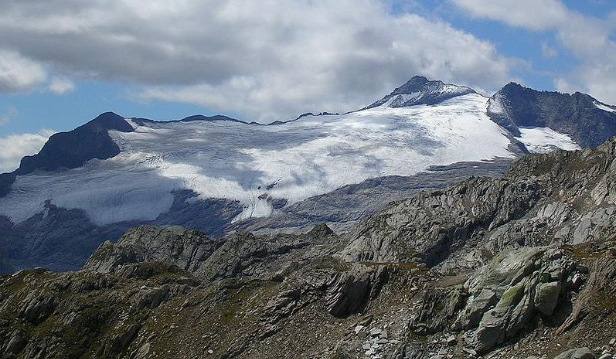 Image: Tom Twigg/Grist
Image: Tom Twigg/Grist
With climate change among the world’s biggest security challenges, the Obama administration should be pumping much more money into addressing the problem, argues a new report [PDF] from the Institute for Policy Studies.
In fiscal year 2008, the United States invested 20 times more money in developing military technology than in developing clean energy technology. The U.S. also spent 50 times as much arming the rest of the world as it did helping other countries transition to clean energy. Altogether, in FY 2008, the U.S. government spent $88 on funding the military for every $1 spent on projects to stabilize the climate.
Compared to the Bush administration, the Obama administration has already increased climate spending, particularly via the economic stimulus package passed earlier this year. But climate change demands much more significant investment, according to report author Miriam Pemberton, a research fellow at the Institute for Policy Studies.
“There are just no restraints whatsoever on military spending. The Pentagon has been given a blank check,” Pemberton told Grist. “There is an incredible infrastructure supporting unlimited military spending, and there certainly hasn’t been that infrastructure put in place to fund green technology.”
Last week, retired military officials and national security experts testified to the Senate Foreign Relations Committee that climate change poses serious security threats, potentially acting as a “threat multiplier” in already unstable countries and creating conflicts over increasingly scarce resources due to drought, famine, and the impacts of extreme weather.
Increasing climate spending “will make the balance of our security resources more consistent with the relative magnitudes of the threats faced by the nation and the world,” the report argues.
More funding for climate change also has the potential to create a large number of U.S. jobs in the green energy and efficiency sectors. The report argues that $1 billion spent on weapons manufacture creates 8,555 jobs, while the same investment in mass transit would create 19,795 jobs, or in infrastructure and home weatherization would create 12,804 jobs.
The report points to research [PDF] from the Center for American Progress and the Political Economy Research Institute that found climate change–related spending in the economic stimulus act, combined with a cap on carbon, could produce public and private investments of approximately $150 billion annually, which could create 1.7 million additional jobs in the U.S.
Looking at the numbers
To compare the total funding for climate versus military, Pemberton tallied up the spending on climate throughout various government programs, including research and development of energy technologies, tax credits for clean energy, climate science research, energy efficiency investments, mass transit, and green job training programs. The figures include both spending in the regular budget and the one-off spending in the economic stimulus package.
The Obama administration has shown improvement over the Bush administration, bringing the gap between military and climate spending down to 65:1 in its FY 2010 budget request, compared to 88:1 for FY 2008. And if you include funding from the stimulus package (which accounts for 87 percent of the total climate-related spending for FY 2010), the ratio for total FY 2010 spending on military versus climate gets much lower still: 9:1.
But because the bulk of climate spending is coming from the economic stimulus bill, that funding isn’t built into the budget and may not be continued.
“This problem is of the magnitude that a one-time investment isn’t going to cut it,” said Pemberton. “The Obama administration is committed to a strong climate change agenda, and investing in green technology. They talk about it all the time. This is their main strategy for job creation, and that’s a great idea.” But stronger funding commitments need to be made, she said.
The Obama administration should make its investment in curbing climate change a clear priority in the budget, explicitly calling out the funds for the public to see, said Pemberton. Right now, the funding is scattered throughout various parts of the budget, and Pemberton had to do a lot of digging to even find out the total amount being spent on climate.
“[Climate change] is the huge challenge of our time,” she said. “We ought to be able to know what the government is really investing in it.”
Pemberton recommends that the Obama administration maintain the levels of climate spending from this year’s stimulus package. Military spending is still far larger, but there is at least more balance between the two, she said.
“The administration takes so much more seriously this climate change challenge than its predecessor,” said Pemberton, “but they’re really going to have to sustain this investment in the regular budget.”



